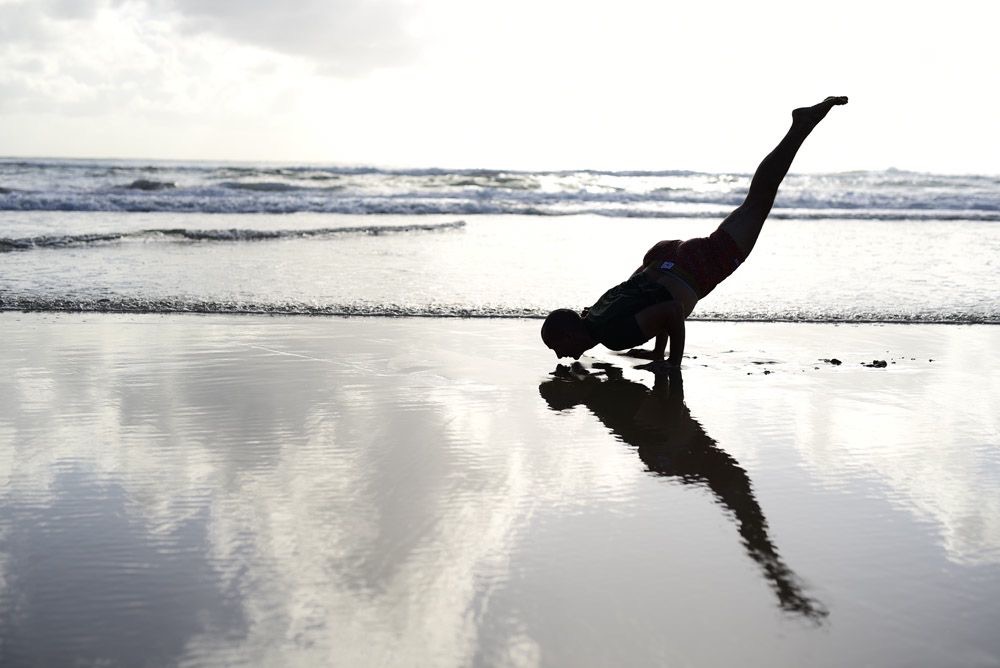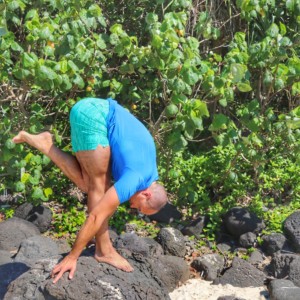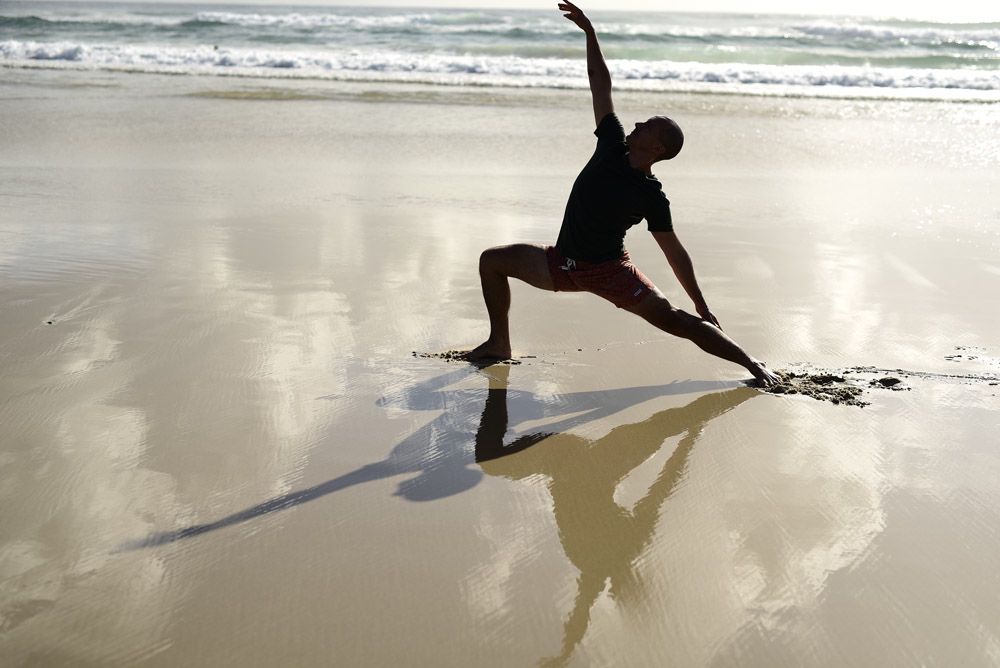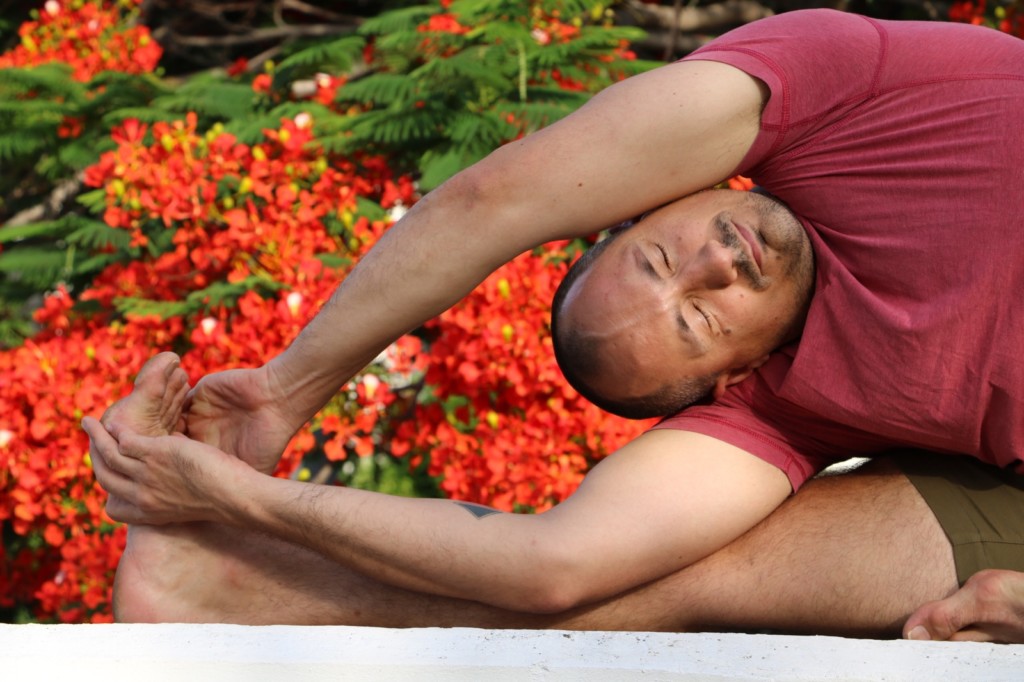Don’t Do This: The Contagion of Fear
Posted on
NEVER do this ONE movement!
Now that you’re here, I’ll apologise. This isn’t really about that ONE movement which you should NEVER do. Quite the opposite, in fact, and the title is a cheap trick. It was done to prove a point, though, and now you’re here, please hang around a little longer.
Why are we drawn in by such clickbait titles? I see articles, links and posts saying things to this effect on social media all the time, and receive email advertisements of its ilk. I find myself sucked in to these kinds of articles and posts a fair bit, even though I should know better. I’d like to say that for me, it is the fascination of, “What is being demonised now?”. I’d like to say that it’s a purely scientific and anthropological interest that gets me in, but I’d be fibbing to myself and to you. I’m drawn by the drama, too, as well as by the fear as a teacher of movement that, “What if I’m wrong after all?” It is so easy to prey on our fear and reactivity, especially in the online space which seems honed in on triggering all of our stuff, and these articles so effectively do just that.

Increasingly, it seems, the movement community, and the modern postural yoga community as a part of that, have become dominated by such fear based and sensationalist narratives. I am a member of a Facebook group centring around yoga and movement research, and that page is filled with them. Some interesting and beneficial posts pop up there and seem to pass by largely unnoticed. Whenever someone posts about ‘extreme’ movements or movement practices, or how injurious a particular facet of yoga practice can be, the comments section lights up. The impression can seem to emerge that there is nothing good about yoga or movement practice. The notion often arises that the risks of a given movement practice mean that said practice is inherently dangerous and should be avoided altogether.
In recent discussion with my teachers and colleagues in The Mazé Method certification program, Rocky Heron used the term ‘kinesiophobia’. Here is the term as defined by Wikipedia:
“Kinesiophobia is a term used in the context of rehabilitation medicine and physical therapy to describe people’s fear of pain due to movement, a factor that hinders rehabilitation and actually prolongs disability and pain. This fear of movement can be a factor in increased time to return to participation in pre-injury activities. It has been shown that higher levels of kinesiophobia are linked to a lack of re-entry into pre-injury activities.”
In my understanding, Rocky was using the term more broadly to describe the phenomenon we are seeing of an aversion to movement, and certain movements in particular. Take the movements of the scapula, for example, and of the entire shoulder joint complex. How would you react if you were in my yoga class and I said, “Raise your arms overhead. Join your palms and reach up…”? At some point along the way, we were taught that it is bad to engage our upper trapezius (that large muscle which runs across the top of the shoulders). Many of us have been taught that when raising our arms overhead, we should always keep our scapulae (shoulderblades) down in our backs, and never join our palms in warrior I. I see it all the time in class that the vast majority of the class won’t join their palms in warrior I, and many people look quite conflicted if I give cues like those above.
Certainly, it is important to begin to understand why we would perform a certain movement, and what its benefits and risks are, both generally and personally. At the end of the day, each of us has the responsibility for working out which movements and movement practices are beneficial, applicable and sustainable for us.
 When I look to my background as a professional ballet dancer, ballet has a lot of rules which don’t make any sense in movement terms. Why would we work with our legs externally rotated (‘turned out’)? This is, relatively speaking, an ‘unnatural’ and very challenging way for the human body to work, not to mention that for many people, it is not skeletally supported (i.e. They simply do not have the capacity, given the shape of their hip joints, to turn their legs out much). I have heard the argument that it offers the opportunity to move most easily and effectively in all directions, and would say that from personal experience, there is truth in this. That being said, it is post factual. The origins of having the legs turned out in ballet seem to be an aesthetic choice based on showing off one’s shapely calves in the Renaissance courts of 15th and 16th century Italy and later France.
When I look to my background as a professional ballet dancer, ballet has a lot of rules which don’t make any sense in movement terms. Why would we work with our legs externally rotated (‘turned out’)? This is, relatively speaking, an ‘unnatural’ and very challenging way for the human body to work, not to mention that for many people, it is not skeletally supported (i.e. They simply do not have the capacity, given the shape of their hip joints, to turn their legs out much). I have heard the argument that it offers the opportunity to move most easily and effectively in all directions, and would say that from personal experience, there is truth in this. That being said, it is post factual. The origins of having the legs turned out in ballet seem to be an aesthetic choice based on showing off one’s shapely calves in the Renaissance courts of 15th and 16th century Italy and later France.
Does this mean that working with my legs turned out all those years did me great harm, and I would recommend that nobody ever do it? No. I learned a lot from doing it, and believe that I am a well equipped, well informed and capable mover in part because of it.
Do people do irreversible harm to their bodies from working in this way, and because of that, do I believe nobody should do it? Sadly, many ex ballet dancers have all sorts of issues due to this work. But no, I don’t think that nobody should do it. I believe that there needs to be better education and understanding, as well as more effective training methods around the work that professionals do. There need to be counter-movement based protocols (this is to say, for example, that those working to externally rotate their legs a lot should do work which actively engages muscles of internal rotation) and ‘pre-habilitation’ programs devised and used for professionals and those in full time training. I also believe that someone who doesn’t do any other form of movement who would enjoy doing ballet class or ballet barre classes a few times per week would be better off moving in this way than not at all. (Although with the best teacher one can get access to. Always with the best teacher one can find, after doing the best research one can do).

It would be all too easy for people who have done damage to their bodies in this way to become advocates for never doing ballet, or never working with one’s legs externally rotated, passing on their fear and prejudice. The thing about fear is that it’s contagious. So what we often see is kinesiophobia by association. As movement teacher Ido Portal says, “People hurt themselves doing something, then they write a book about it.” The rest of us ‘catch’ this fear. We believe that we shouldn’t do a particular movement, but often couldn’t say why.
Back to that point about lifting your arms overhead in yoga class. Should you do it? Should you always work within a range where you can, “Keep your shoulderblades pulled down? And where, even, did this idea come from? Many people in our society have issues in their cervical spine. Many suffer from excessive tension in their upper shoulders and necks, and especially the upper trapezius muscle, which is a key muscle in the action of raising the arms overhead, as well as being implicated in the upward rotation of the scapulae required to perform 180 degree abduction of the arms. Many, then, would assume that it is raising the arms overhead that is a problem. If anything, though, it seems it is sub-optimal alignment of the shoulder girdle and a concomitant lack of mobility of the scapulae which cause issues in the region. This study, done in 2013, begins to argue the case that lack of movement and sub optimal muscle recruitment at the scapulae (which ideally slide and glide in a variety of directions to facilitate the movement of the upper extremity and especially the arms) go hand in hand with neck and shoulder issues.
So should we move the shoulder girdle less? If anything, I would say there is an argument for moving more, although doing so with better information. As a technical aside, it is the serratus anterior which is a primary upward rotator of the scapulae required in this action. As the upper trapezius becomes activated in abduction of the arms, in those with an under-active serratus anterior, the upper trapezius may well dominate this movement, also. As such, it is not that we need to avoid the movement, but rather to re-train the movement, so that the serratus anterior is more active in it.
As with anything and everything, there is great complexity here, and denying the problem only creates a greater problem: That we don’t move enough, nor well enough. For me, movement is a fundamental human challenge, and just like the work of being the best, most fully contributing human beings we can be, requires ceaseless effort and engagement. It requires not shying away from our challenges, but engaging them meaningfully and continually equipping ourselves to do so more effectively.
Any movement practice has its inherent risks, and doing anything repetitively, especially with mindlessrepetition, is likely to cause injury to show up. In my experience, both of my own personal injuries and those exhibited by those around me, are caused for the most part by movements which haven’t been optimised for. This might mean that there is a one time traumatic event which takes the body to a range it is not accustomed to, or the injury is caused through repetition of movements which haven’t yet been understood nor appropriate patterns created for.
There is so much more that could be said here. After all, this is what I might call my life’s work, or at least a significant part thereof. I could talk about how it may well be that the body thrives on and evolves through stress, skilfully and judicially applied. This isn’t a new idea-many have applied it over the years, some skilfully and others less so. Ido Portal talks about it a fair bit, inspired at least in part by the ideas in Nicholas Nassim Taleb’s book, Antifragile. It is an idea that I think we could easily choose to avoid in postural yoga, and may even be considered taboo. “How such a notion could possibly adhere to ahimsa?”, I hear you say.

That’s all another discussion for another day (In fact, I just put it in my ever growing list of blogs to write). For now, consider:
Drop the fear. Please. It doesn’t serve anyone. It doesn’t foster an expansive, educational agenda of understanding and optimisation. It just drives clicks, and keeps us all engaged in ever contracting spirals. In practical terms, some of your fears around movement, especially those movements connected to pain and injury you’ve experienced, are valid, and to be listened to. Others need to be interrogated. Some of the learnings you have through your injuries may benefit others, but consider if you might share those benefits without selling the fear, and selling with fear.
Replace “Never do…”, with, “It depends”. Extracting the greatest value from movement involves taking the best from everything. This is one of my favourite things about how my teacher, Noah Mazé, approaches teaching and movement. Whenever someone in a training asks, “ Shouldn’t you avoid ever doing that movement?”, Noah responds with, “It depends”. He will then proceed to look at why we might perform that movement, what its inherent benefits and risks are, what we might gain from it and how we might optimise for it. This, as an idea, creates learning and growth. Applied in movement practice, it creates skill in action.
Think outside the box, move outside the box. What if that thing you’ve been avoiding and judging could offer something incredible to your movement practice? What if your greatest possibility lies beyond your greatest certainty, a certainty that the movement or way of moving is ‘bad’, or ‘wrong’?
Inform yourself. Overthinking movement can be just as deleterious as moving with little or no reflection. It is the mark of a mature human to interrogate one’s thoughts and test one’s assumptions. It is the mark of a mature mover to interrogate movement and movement possibilities, using a variety of methods. Movement is key in these methods, and all things must come back to movement, but we have so much else we can draw upon. Seek out the best information you can and the best teachers you can as you do that. There is no shortage of great teachers and informed movers and thinkers out there, but ultimately the responsibility falls on us to process the information available, making it applicable and beneficial to us.
Lastly, always, always stay in motion, stay in the questions and stay in the game.
With love,
Marty
 Today’s blogger, Martin Collyer, is an Australia based yoga teacher and a graduate of The Mazé Method 500 hour teacher training program.
Today’s blogger, Martin Collyer, is an Australia based yoga teacher and a graduate of The Mazé Method 500 hour teacher training program.
Marty’s formal career as a mover started at age 9, when he decided he wanted to make a living as a professional ballet dancer. He did that, and along that road, some fifteen years ago, began the journey down the rabbit hole that is Yoga. As rabbit holes tend to do, this takes me ever deeper on a winding road. His road is one where movement is key. Where life as a professional dancer (primarily a ballet dancer, but also performing neo-classical and contemporary works) met Yoga, and at some point, life as a professional dancer fell away.
Yoga, for Marty, provides an incredible means to do what he has sought to do as long as he can remember: Make sense of himself, and of life, and to know how best to engage in all of this. The more he gets to know about Yoga, the more elusive the subject seems to become. The more he see its diversity, and how diverse the people and practices have been over the several millenia of its existence, the more he sees it like any great idea: It lives and breathes within us, and means different things to each of us. While he believes in a healthy reverence for what has come before, he also believes in radical efficacy and in seeking the highest truth available to us. That lies in study, and work, and clarity, but also in staying open, for our greatest certainty is so often a closed door.
In Marty’s work, he seeks to inspire the same in you. He’ll give you the best of his learning and experience, but ultimately invite you to make your own rich and potent version.
